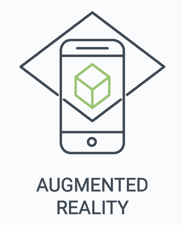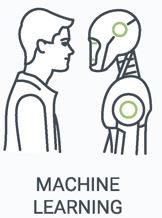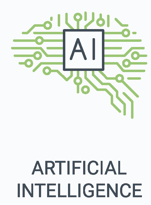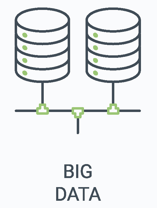
In today’s episode, I will comment on the Metaverse as there is plenty of hype on the topic. I will focus on Myths and Realities and a couple of comments on areas of improvement.
As always, it will be simple and concise but accurate.
This may become a regular topic based on your feedback and likes. Click on Subscribe if you want to be informed of new episodes.
What is the Metaverse?
I know many of you have your definition of the Metaverse or at least accepted the meaning from a trusted source. I will not compete with that; instead, I will try to simplify the task by providing two definitions. I have an extended explanation and a short one: The long one goes like this:
“The Metaverse is a Digital representation of a living space, where individuals may interact with physical entities (people and objects) and digital entities (organizations), to make decisions affecting their life and other people’s life.”
The short one may go like this:
“The Metaverse is the last maturity stage, the end-point, of any Digital Transformation Initiative.”
May you please elaborate a little longer on these definitions?
Sure,
In Episode 2, we mentioned that any Digital Transformation initiative should have at least two goals: (1) Improving Customer Loyalty and (2) Improving your Operational Efficiency.
The best way to achieve both goals is by enhancing the Customer Experience so Customers, Partners, and Companies will interact, learn from other parties, and respond to their needs in real-time.
How can we reach that stage?
By building a parallel digital marketplace, (1) where everything needed to interact is already available, (2) every possible interaction is captured and analyzed in real-time, (3) all responses are personalized, (4) and all personal information and company assets are kept secure.
A parallel Digital Marketplace?
Yes, in essence, this is the Metaverse. The word can be understood as the following:
Meta: Alternative, beyond, in parallel
Universe: Everything you need to have an effective interaction in real time as close as a physical one.
Ok, Jose, you got me; what does this Metaverse look like?
Solution Building Blocks of the Metaverse:
Let’s take this episode’s header picture as an example, Physical Therapy, and comment on each stage of the interaction with solution building blocks.
A possible use case could look like this:
(1) Customer Login > (2) Selection of Therapy > (3) Therapy Execution > (4) Updating cases.
(1) Customer Login:

Augmented Vision: In this case, the user has physical impairments to log in using a keyboard, but now we can provide an augmented vision device to log in using retina identification.

Security: (Episode 23) Security is critical to any Metaverse deployment. User Access, Application Security, Integration security, Centralized-> Decentralized security using Edge Computing.
(2) Selection of Therapy:
Digital Twins: (Episode 11) Imagine that the customer wants to complete their therapy outdoors. Using virtual reality (a version of digital twins), customers can immerse themselves in an experience crafted for their preferences.
Still, we need to replicate the rowing experience. Any thoughts?
Yes, it is required front-end and backend adjustments. Let’s talk about some of them.
(3) Therapy Execution:

Sensors and Actuators: (IoT) The oar should be an intelligent device with sensors and actuators (IoT, Episode 10). It can include the possibility to add weights as needed as the user improves their health condition.
What can we do to improve the user experience backend?

Machine Learning: (Episode 17) will help us learn the best ways to use the oar and transfer the skills to the user using sensory signals (vibrating capabilities?).

Artificial Intelligence: (Episode 5, Episode 15) can help us to process information in real-time and provide best practices to customers to improve health conditions and reduce injuries.

Analytics: (Episode 20) excellent approach should be to provide information and best practices using the augmented vision (AV) device. Analytics will require data collection, processing, and finding knowledge bits to be rendered using an AV device.
Can you imagine if the user may select content via eye-pupil reading or voice recognition? Awesome.

Blockchain: Blockchain will play a significant role in any Metaverse deployment. Blockchain is a perfect solution to connect physical assets to digital tracking systems (to name one use case).
An aside: I haven’t published any Episodes on Blockchain technologies, should I? Let me know.
(4) Updating Cases:

Big Data: Updating Cases is related to having all historical information available 24×7, ready to be used by the customer, with a customer-centric focus. This is a mix of Big Data, Cloud, Analytics, and high-speed networks (5G Networks).
How good is this Metaverse case?
Effective, but still, there are some weak areas to cover.
What’s missing?
Metaverse, gaps to cover?
The Metaverse, by definition, must be inclusive.
This use case is based on personal interaction between an organization and a customer.
This use case is compelling but needs some changes to allow multi-party interaction (users, partners, or even other companies). Replicating this approach will create a plethora of competing multiverse approaches.
How can we avoid that?
Need of Standards: By having a set of standards on governance, data policies, data interaction, and data integrating points.
May you please provide an example?
Sure,
One of the successes of gasoline distribution is that all cars are compatible with a standard gas pump across markets. The same happens with electric vehicles.
In the Metaverse, many players still propose their own standards to build momentum around their vision.
In recent years, there has been an essential improvement in Metaverse Standards, led by IEEE.
Digital Life Ethics: Imagine that Life as we know it is entirely replicated by a Digital counterpart (Digital Twin Model). This creates a significant opportunity to drive ideas, consensus, and behavior modification. One important aspect of Digital Life is to protect user privacy and user values.
Recently, governments, companies (Google, Microsoft, IBM), and thought leaders (Andrew Ng, YOU) have spoken about the importance of using technologies to improve society. Some of them refer to ethical AI and other talks about Digital Life.
The European Union Commission has been working on this since 2021. I am unaware of similar efforts in other geographies. In the past, different geographies followed the standards of the leading organization.
Good enough?

What are your thoughts on the subjects raised in this edition of the Digital Acceleration Newsletter?
This is a fascinating topic. We can go deeper based on your feedback.
Share them in the comments below, and if you have ideas about other topics you’d like to see covered in this newsletter, feel free to add those suggestions.
